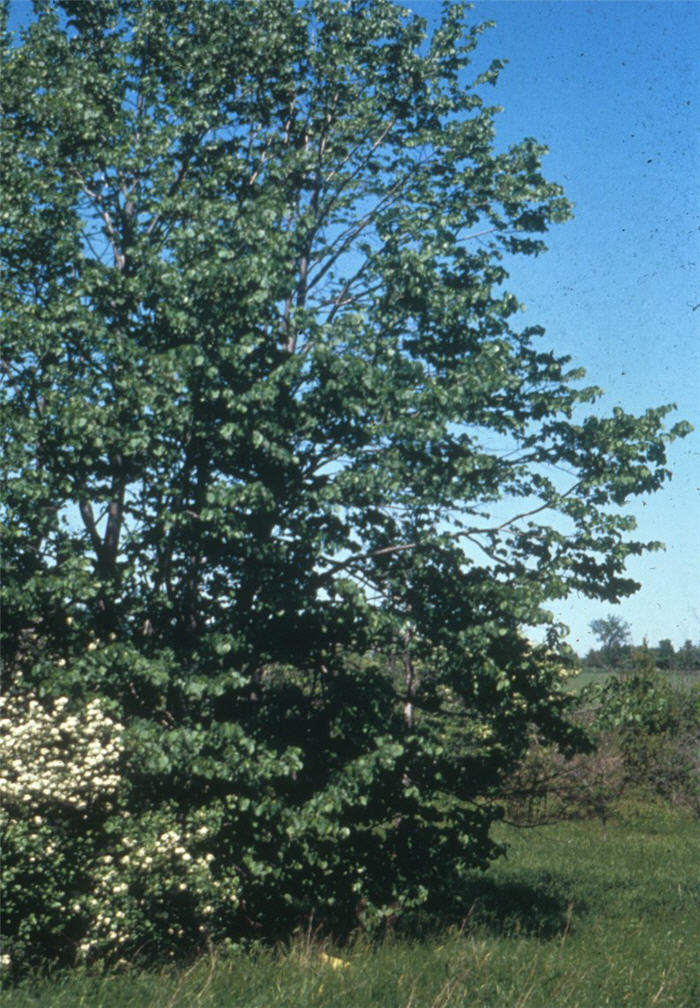| Botanical Name: Tilia americana | |
| Common Name: American Linden |

-
Anatomy
-
Culture
-
Design
Plant Type
Tree
Height Range
40-60', 60-100'
Flower Color
Yellow, White
Flower Season
Summer
Leaf Color
Green
Bark Color
Brown, Grey
Fruit Color
Brown
Fruit Season
Fall
Sun
Full, Half
Water
Medium, Extra in Summer
Growth Rate
Moderate
Soil Type
Clay, Loam
Soil Condition
Average, Rich, Well-drained, Moist
Soil pH
Acid, Neutral, Basic
Adverse Factors
Attracts Bees, Messy
Design Styles
Formal, Woodland
Accenting Features
Fragrance, Specimen
Seasonal Interest
Summer
Location Uses
Background, Lawn, Patio, Park
Special Uses
Screen, Shade Tree
Attracts Wildlife
Birds
Information by: Stephanie Duer
Photographer: Steve Mullany
Photographer: Steve Mullany
-
Description
-
Notes
American Linden is native to eastern North America. It is a large, deciduous tree with an oval to spreading pyramidal form that is very distinctive in the winter. Grows about 50 to 70 feet tall and nearly as wide, though size varies greatly between cultivars. Leaves are broadly heart-shaped and dark green avove and pale green to silvery underneath. Autumn foliage is yellow. Flowers are small and nearly hidden by the foliage, but you'll know they are there by the honey-clove scent in late June to early July. Followed by very small, round, fuzzy nutlets. Bark is grey-brown with distinctive, flat-topped ridges. Great shade or lawn tree.
Grow in well-drained soil in full sun to part shade. Prefers fertile, well-drained loams. Tolerates some drought once established. Some think the tree messay, what with the flowers and the little nutlets, but the flowers are divinely fragrant, and make a charming mat under the tree when they are spent.